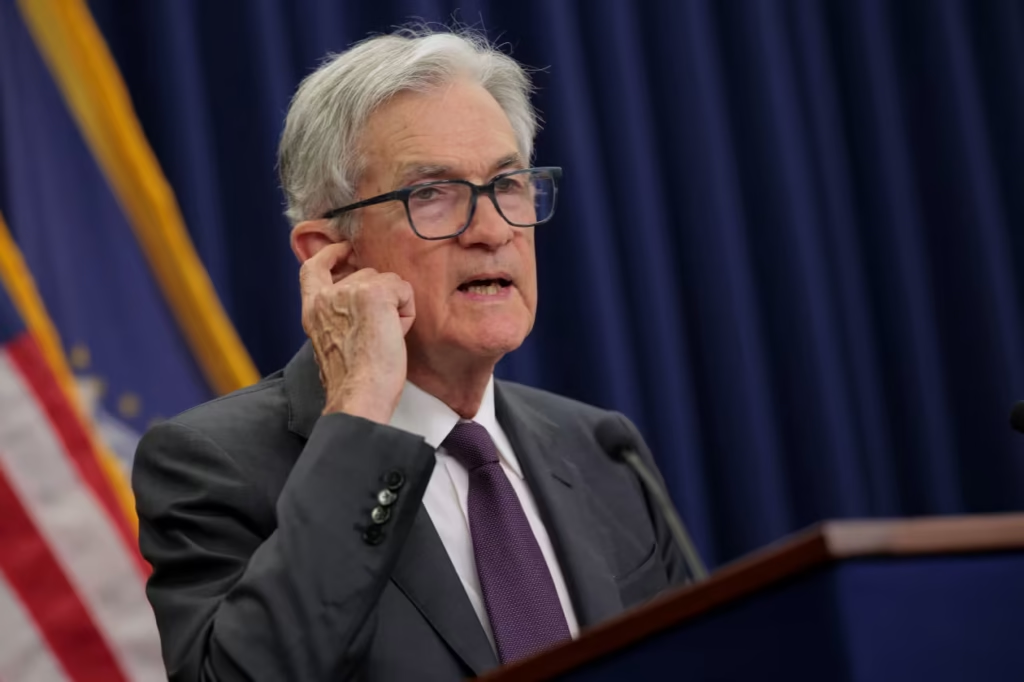Jerome Powell, the chair of the Federal Reserve
The Federal Reserve is almost set to lower interest rates by a quarter-percentage point at its next meeting after nine months of inaction. However, the impending shift has caused a lot of anxiety. What’s causing the argument?
The future for the economy, which appears headed for an unusual period of slower growth with higher inflation, is one aspect of the argument. Increased import duties are creating uncertainty, decelerating business, and driving up costs.
Regarding whether it is more crucial for the Fed to fight higher inflation or slower growth, experts are divided in this context.
After Friday’s poor jobs data, economists concerned about a recession want a further cut, while those concerned about increased inflation want the Fed to maintain rates at their current level.
The argument for a rate drop in the absence of stagflation would be straightforward: lower rates to protect against the possibility of further weakness.
Everyone agrees that the present rates, which fall between 4.255% and 4.5%, are high enough to somewhat reduce demand. Thus, a rate reduction could encourage activity. However, a rate drop could lead to increased inflation in a stagflationary scenario.
In August, the economy created just 22,000 new jobs. The three-month average of more than 100,000 jobs throughout the first three months of the year is far more than that.
Bianco Research president Jim Bianco, who opposes rate cuts from the Fed, believes that the economy is currently producing about 22,000 jobs per month.
In previous years, the minimum number of jobs required to maintain a stable unemployment rate based on population growth was estimated to be around 100,000 jobs per month.
However, the fact that many immigrants were a part of this population rise is hardly discussed. Because President Donald Trump is essentially “closing the border,” the economy may only be able to sustain itself with 22,000 workers each month.
In an interview with Bloomberg News, Bianco stated that any Fed cut today will just increase inflation since there are no additional workers.
However, Matthew Luzzetti, chief U.S. economist at Deutsche Bank, believes that the smaller payroll growth this summer are caused by weak demand as a result of the prolonged uncertainty shock from increased tariffs rather than a limited labor supply. In September, he anticipates a 25 basis point cut by the Fed.
The Fed should arrange a half-percentage-point rate decrease in September, according to Steve Englander, head of Standard Chartered Bank’s North America Macro Strategy.
According to Englander, the employment market’s supply and demand dynamics conceal the labor market’s true weakness. Englander stated in a research note that he believes the move would be “a catch-up” cut rather than a series of half-point decreases.
In a Financial Times opinion piece, Ruchir Sharma, an economist at Rockefeller International, suggested that the Fed ought to think about raising interest rates. Consumer price inflation has been above the Fed’s 2% target for four years and is predicted to stay there for the foreseeable future due to extremely slack financial conditions.
The conventional wisdom that the Fed would make a quarter-percentage-point drop is founded on “the same alarmist reflex – rush to the rescue at the slightest hint of economy trouble – that has been undermining Fed credibility and fueling financial bubbles for decades,” he said.





